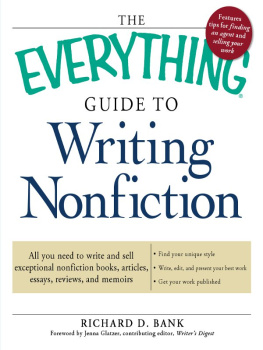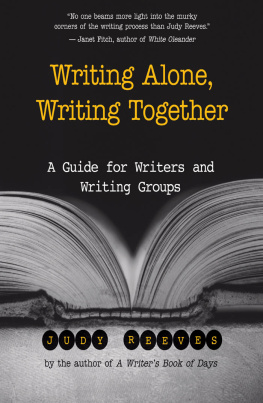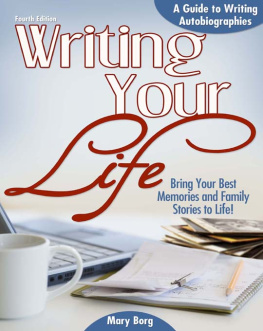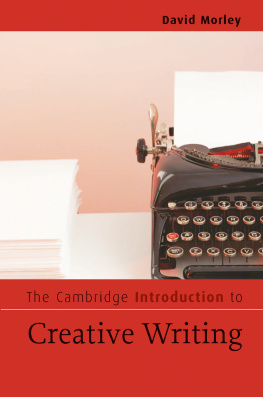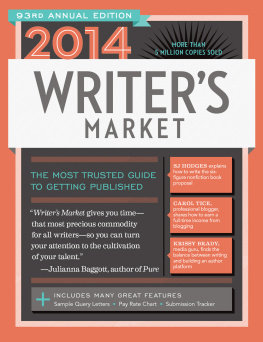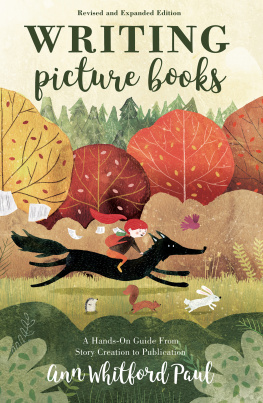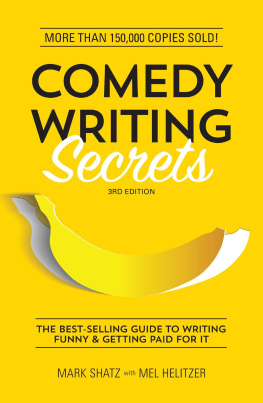

Copyright 2012 by Brenda Miller and Suzanne Paola. All rights reserved. Except as permitted under the United States Copyright Act of 1976, no part of this publication may be reproduced or distributed in any form or by any means, or stored in a database or retrieval system, without the prior written permission of the publisher.
ISBN: 978-0-07-178178-7
MHID: 0-07-178178-1
The material in this eBook also appears in the print version of this title: ISBN: 978-0-07-178177-0, MHID: 0-07-178177-3.
All trademarks are trademarks of their respective owners. Rather than put a trademark symbol after every occurrence of a trademarked name, we use names in an editorial fashion only, and to the benefit of the trademark owner, with no intention of infringement of the trademark. Where such designations appear in this book, they have been printed with initial caps.
McGraw-Hill eBooks are available at special quantity discounts to use as premiums and sales promotions, or for use in corporate training programs. To contact a representative please e-mail us at bulksales@mcgraw-hill.com.
See the authors Facebook page for information about the revised Tell It Slant website.
Emily Dickinson poem (p. v) reprinted by permission of the publishers and the trustees of Amherst College from The Poems of Emily Dickinson, Thomas H. Johnson, ed., Cambridge: Mass.: The Belknap Press of Harvard University Press, copyright 1951, 1955, 1979, 1983 by the president and fellows of Harvard College.
TERMS OF USE
This is a copyrighted work and The McGraw-Hill Companies, Inc. (McGraw-Hill) and its licensors reserve all rights in and to the work. Use of this work is subject to these terms. Except as permitted under the Copyright Act of 1976 and the right to store and retrieve one copy of the work, you may not decompile, disassemble, reverse engineer, reproduce, modify, create derivative works based upon, transmit, distribute, disseminate, sell, publish or sublicense the work or any part of it without McGraw-Hills prior consent. You may use the work for your own noncommercial and personal use; any other use of the work is strictly prohibited. Your right to use the work may be terminated if you fail to comply with these terms.
THE WORK IS PROVIDED AS IS. McGRAW-HILL AND ITS LICENSORS MAKE NO GUARANTEES OR WARRANTIES AS TO THE ACCURACY, ADEQUACY OR COMPLETENESS OF OR RESULTS TO BE OBTAINED FROM USING THE WORK, INCLUDING ANY INFORMATION THAT CAN BE ACCESSED THROUGH THE WORK VIA HYPERLINK OR OTHERWISE, AND EXPRESSLY DISCLAIM ANY WARRANTY, EXPRESS OR IMPLIED, INCLUDING BUT NOT LIMITED TO IMPLIED WARRANTIES OF MERCHANTABILITY OR FITNESS FOR A PARTICULAR PURPOSE. McGraw-Hill and its licensors do not warrant or guarantee that the functions contained in the work will meet your requirements or that its operation will be uninterrupted or error free. Neither McGraw-Hill nor its licensors shall be liable to you or anyone else for any inaccuracy, error or omission, regardless of cause, in the work or for any damages resulting therefrom. McGraw-Hill has no responsibility for the content of any information accessed through the work. Under no circumstances shall McGraw-Hill and/or its licensors be liable for any indirect, incidental, special, punitive, consequential or similar damages that result from the use of or inability to use the work, even if any of them has been advised of the possibility of such damages. This limitation of liability shall apply to any claim or cause whatsoever whether such claim or cause arises in contract, tort or otherwise.
Tell all the Truth but tell it Slant
Success in Circuit lies
Too bright for our infirm Delight
The Truths superb surprise
As Lightening to the Children eased
With explanation kind
The Truth must dazzle gradually
Or every man be blind
EMILY DICKINSON
Contents
Preface
Since the initial publication of the textbook version of Tell It Slant in 2003, the landscape of creative nonfiction has evolved. Creative nonfiction courses are now being taught at virtually all universities and colleges, and the esteemed magazine Poets and Writers has finally recognized creative nonfiction as a categoryalong with fiction and poetryin its Directory of Writers. No longer must creative nonfiction justify itself as a solid literary genre; rather, creative nonfictionists are generating some of the most exciting new works in literatureas well as some of the most intriguing controversies.
Creative nonfiction writers have embraced new ways of forming their textsincluding online technologiesbecause the genre lends itself to grand experimentation. Dozens of new journals have sprung upboth in print and onlinethat feature creative nonfiction prominently in their offerings. The biennial NonfictioNow conference, sponsored by the creative nonfiction program at the University of Iowa, brings together leading luminaries in the field, along with hundreds of creative nonfiction practitioners eager to connect with one another and deepen their study of this endlessly fascinating genre.
Once a lone instructional text in a field of personal essay anthologies, the original edition of Tell It Slant foresaw the way creative nonfiction teachers and new writers would need some guidance in the basics of creative nonfiction in order to create a strong foundation for this evolution. The book became the go-to text for universities, garnering a following of thousands of students and writers who found the personal voices of the authors an engaging way to enter this field, using the text in creative nonfiction and composition studies. Now, several more fine textbooks have emerged to share the shelf with Tell It Slant, but this book remains a favorite for those who rely on its thorough examination of the many forms creative nonfiction can take.
Unfortunately, in 2010, the textbook edition of Tell It Slant, which included an anthology section, went out of print, but the trade edition remains a preferred book for those seeking accessible guidance on the many subjects and stances that creative nonfiction can explore. So this seemed the perfect time to update the book you have in your hands, not only to help academics use this combined text and trade edition for their classes, but also to keep pace with the growth in creative nonfiction forms, ethical controversies, and publication outlets for exciting new work.
We have updated references throughout the book to include more recent work in the field, as well as highlighted innovative creative nonfiction that plays with the boundaries of experimentation and form. Weve added new Try It exercises that have been field tested with great success in the classroom, and weve updated the chapter titled The Particular Challenges of Creative Nonfiction to include references to James Frey and other controversies regarding nonfiction ethics, with material for generating rich discussion on the topic.
Weve expanded the chapter previously titled The Basics of Personal Reportage, now called Using Research to Expand Your Perspective, in order to show the way topical nonfiction, or nonfiction on a particular subjectscent, meals, particular plants, etc.has recently come to the fore-front of the nonfiction field. We show how research methodsusing the Internet, interview, and immersionhave evolved along with developments in technology, and weve enhanced our discussion on how to use research to generate powerful writing.
Next page

